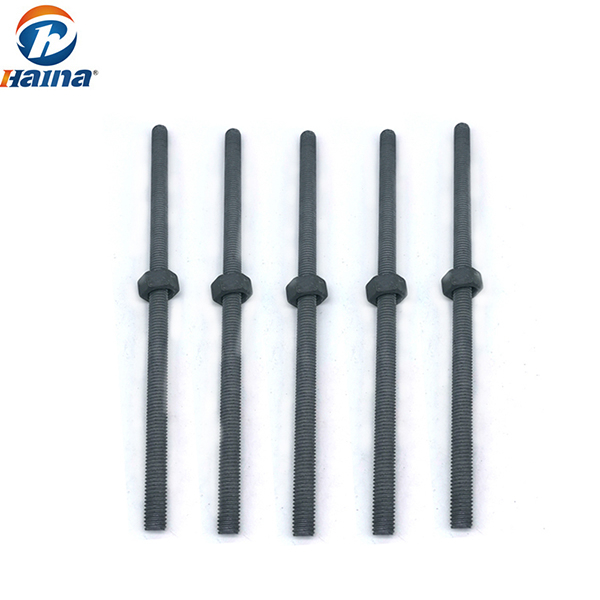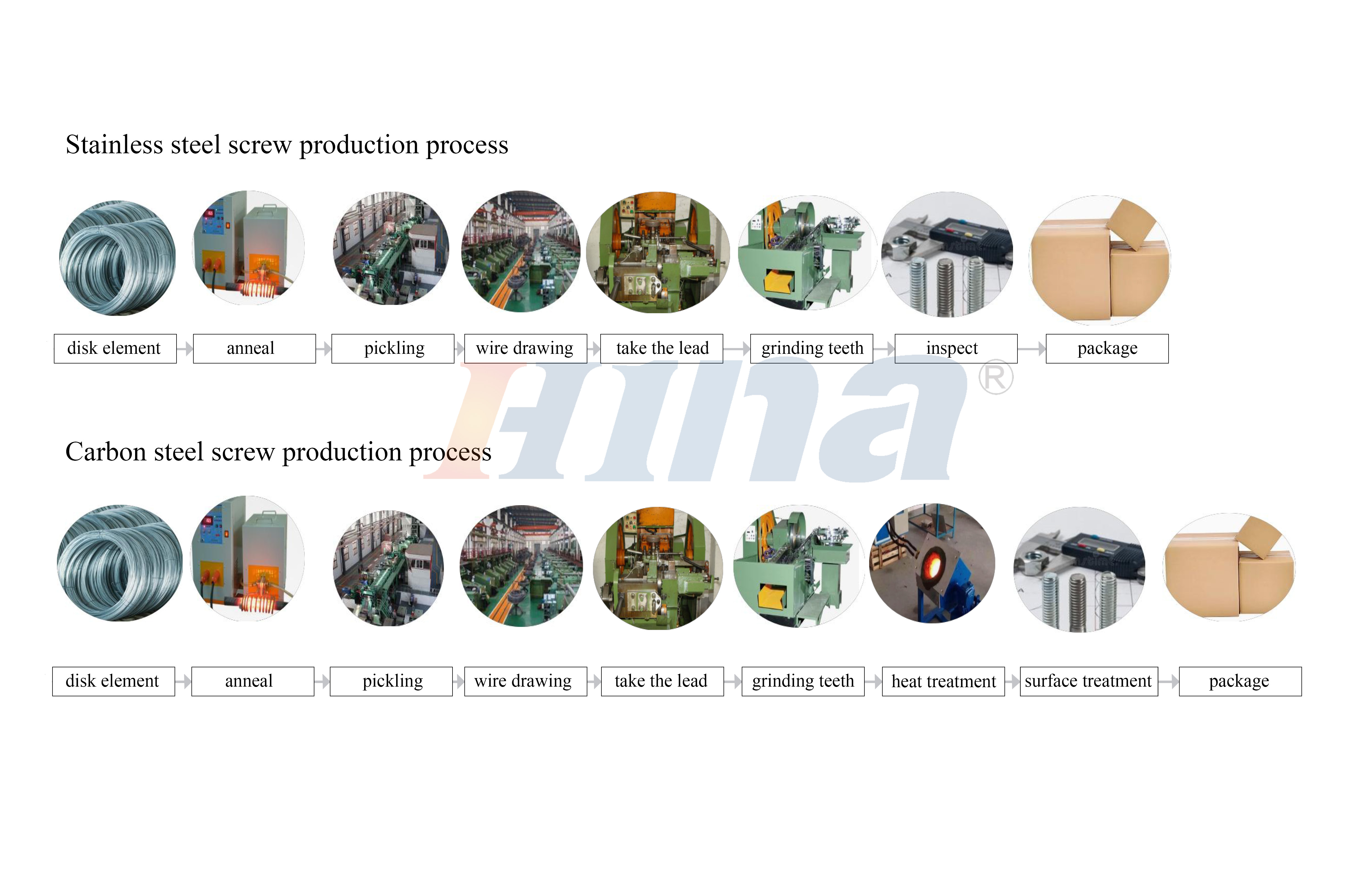- All
- Product Name
- Product Keyword
- Product Model
- Product Summary
- Product Description
- Multi Field Search
| Availability: | |
|---|---|
| Quantity: | |




HNF
HNF2024121805
Carbon steel tooth rods are mainly made of carbon steel. Carbon steel is an iron-carbon alloy with a carbon content of 0.0218% - 2.11%. In addition to carbon, it may also contain a small amount of impurity elements such as silicon (Si), manganese (Mn), sulfur (S), phosphorus (P), etc. The tooth rod has threads, and its shape is usually a long rod-like structure. The threads are distributed along the rod body and are used for mechanical purposes such as connection and fastening.

Strength characteristics: Carbon steel tooth rods have a certain strength and can withstand a certain amount of tension and pressure. Its strength increases with the increase of carbon content. For example, medium carbon steel tooth rods have higher strength than low carbon steel tooth rods and can be used in fastening connections that require greater force, such as the connection of some supporting components in building structures.
Hardness performance: The hardness is moderate, and its hardness can be further increased by heat treatment (such as quenching and tempering). However, if the hardness is too high, the toughness of the tooth rod may be reduced and brittle fracture may occur easily. Appropriate hardness makes it difficult for the thread to be damaged when tightening nuts and other operations.
Good processing performance: Carbon steel materials are easy to cut and can be used to manufacture various specifications of tooth rods. For example, in a machining workshop, carbon steel raw materials can be processed into tooth rods that meet the requirements through turning, milling and other processes, and the size, pitch and other parameters of the thread can be adjusted as needed during the processing.
Construction field: widely used in the reinforcement and connection of building structures. For example, in concrete structures, carbon steel tooth rods can be used as tension bolts to fix the formwork to ensure the shape and position of the formwork during concrete pouring. At the same time, in steel structure buildings, they are also used to connect steel beams, steel columns and other components to strengthen and stabilize the structure.
Machinery manufacturing industry: as a connecting component of mechanical parts. In machine tools, engineering machinery and other equipment, carbon steel tooth rods can connect different parts together. For example, between the bed and the workbench of a machine tool, the position of the workbench can be accurately adjusted by the cooperation of carbon steel tooth rods and nuts, and its stability during the working process can be ensured.
Professional Manufacturer : All of our Fastener are designed and manufactured according to buyers'specification and performance.
Quality is guaranteed : Durability testing and critical technical design to enhance fasteners lifetime.
Cost effective : Wide range of parts selection , Competitive prices with professional factory supply.
Customized ideal Fasteners : customized services according to the samples and drawing offered.
Through scientific management, Jiaxing Haina fastener Ltd company has been obtained ISO9000 certificate of Quality Managerment System, SGS and BV international certificate system of Make in China.

What is a threaded rod used for?
Threaded rods are used to fasten or connect materials, provide support, and stabilize structures in construction, manufacturing, and repair applications.
What is the difference between a stud and a threaded rod?
The main difference between studs and threaded rods is their length and purpose. Studs are usually shorter and have threads at both ends, with no threads or only a small amount of threads in the middle. They are used for double-sided fixing, such as the connection between flanges and mechanical parts. Threaded rods are threaded throughout and have a longer length. They can be cut as needed and are widely used in construction, installation, and maintenance for fixing, tightening, or structural reinforcement. Studs are suitable for precision connections, while threaded rods are more flexible and suitable for general fixing.
What is the purpose of a double stud?
The main function of a double-ended stud is to provide a strong double-sided connection, which is suitable for structural parts that require high-strength fixing. One end of the double-ended stud is screwed into the main material, and the other end is connected to other components through a nut, so that it can remain stable under high pressure or vibration environments. It is widely used in occasions such as machinery, automobiles, and construction that require disassembly and maintenance, such as fixing engines, flanges, and heavy machinery and equipment. The double-headed stud design makes loading and unloading easier, and there is no need to frequently replace the main material, which effectively extends the service life.
Carbon steel tooth rods are mainly made of carbon steel. Carbon steel is an iron-carbon alloy with a carbon content of 0.0218% - 2.11%. In addition to carbon, it may also contain a small amount of impurity elements such as silicon (Si), manganese (Mn), sulfur (S), phosphorus (P), etc. The tooth rod has threads, and its shape is usually a long rod-like structure. The threads are distributed along the rod body and are used for mechanical purposes such as connection and fastening.

Strength characteristics: Carbon steel tooth rods have a certain strength and can withstand a certain amount of tension and pressure. Its strength increases with the increase of carbon content. For example, medium carbon steel tooth rods have higher strength than low carbon steel tooth rods and can be used in fastening connections that require greater force, such as the connection of some supporting components in building structures.
Hardness performance: The hardness is moderate, and its hardness can be further increased by heat treatment (such as quenching and tempering). However, if the hardness is too high, the toughness of the tooth rod may be reduced and brittle fracture may occur easily. Appropriate hardness makes it difficult for the thread to be damaged when tightening nuts and other operations.
Good processing performance: Carbon steel materials are easy to cut and can be used to manufacture various specifications of tooth rods. For example, in a machining workshop, carbon steel raw materials can be processed into tooth rods that meet the requirements through turning, milling and other processes, and the size, pitch and other parameters of the thread can be adjusted as needed during the processing.
Construction field: widely used in the reinforcement and connection of building structures. For example, in concrete structures, carbon steel tooth rods can be used as tension bolts to fix the formwork to ensure the shape and position of the formwork during concrete pouring. At the same time, in steel structure buildings, they are also used to connect steel beams, steel columns and other components to strengthen and stabilize the structure.
Machinery manufacturing industry: as a connecting component of mechanical parts. In machine tools, engineering machinery and other equipment, carbon steel tooth rods can connect different parts together. For example, between the bed and the workbench of a machine tool, the position of the workbench can be accurately adjusted by the cooperation of carbon steel tooth rods and nuts, and its stability during the working process can be ensured.
Professional Manufacturer : All of our Fastener are designed and manufactured according to buyers'specification and performance.
Quality is guaranteed : Durability testing and critical technical design to enhance fasteners lifetime.
Cost effective : Wide range of parts selection , Competitive prices with professional factory supply.
Customized ideal Fasteners : customized services according to the samples and drawing offered.
Through scientific management, Jiaxing Haina fastener Ltd company has been obtained ISO9000 certificate of Quality Managerment System, SGS and BV international certificate system of Make in China.

What is a threaded rod used for?
Threaded rods are used to fasten or connect materials, provide support, and stabilize structures in construction, manufacturing, and repair applications.
What is the difference between a stud and a threaded rod?
The main difference between studs and threaded rods is their length and purpose. Studs are usually shorter and have threads at both ends, with no threads or only a small amount of threads in the middle. They are used for double-sided fixing, such as the connection between flanges and mechanical parts. Threaded rods are threaded throughout and have a longer length. They can be cut as needed and are widely used in construction, installation, and maintenance for fixing, tightening, or structural reinforcement. Studs are suitable for precision connections, while threaded rods are more flexible and suitable for general fixing.
What is the purpose of a double stud?
The main function of a double-ended stud is to provide a strong double-sided connection, which is suitable for structural parts that require high-strength fixing. One end of the double-ended stud is screwed into the main material, and the other end is connected to other components through a nut, so that it can remain stable under high pressure or vibration environments. It is widely used in occasions such as machinery, automobiles, and construction that require disassembly and maintenance, such as fixing engines, flanges, and heavy machinery and equipment. The double-headed stud design makes loading and unloading easier, and there is no need to frequently replace the main material, which effectively extends the service life.